Politics
Which Countries are the Most Polarized?
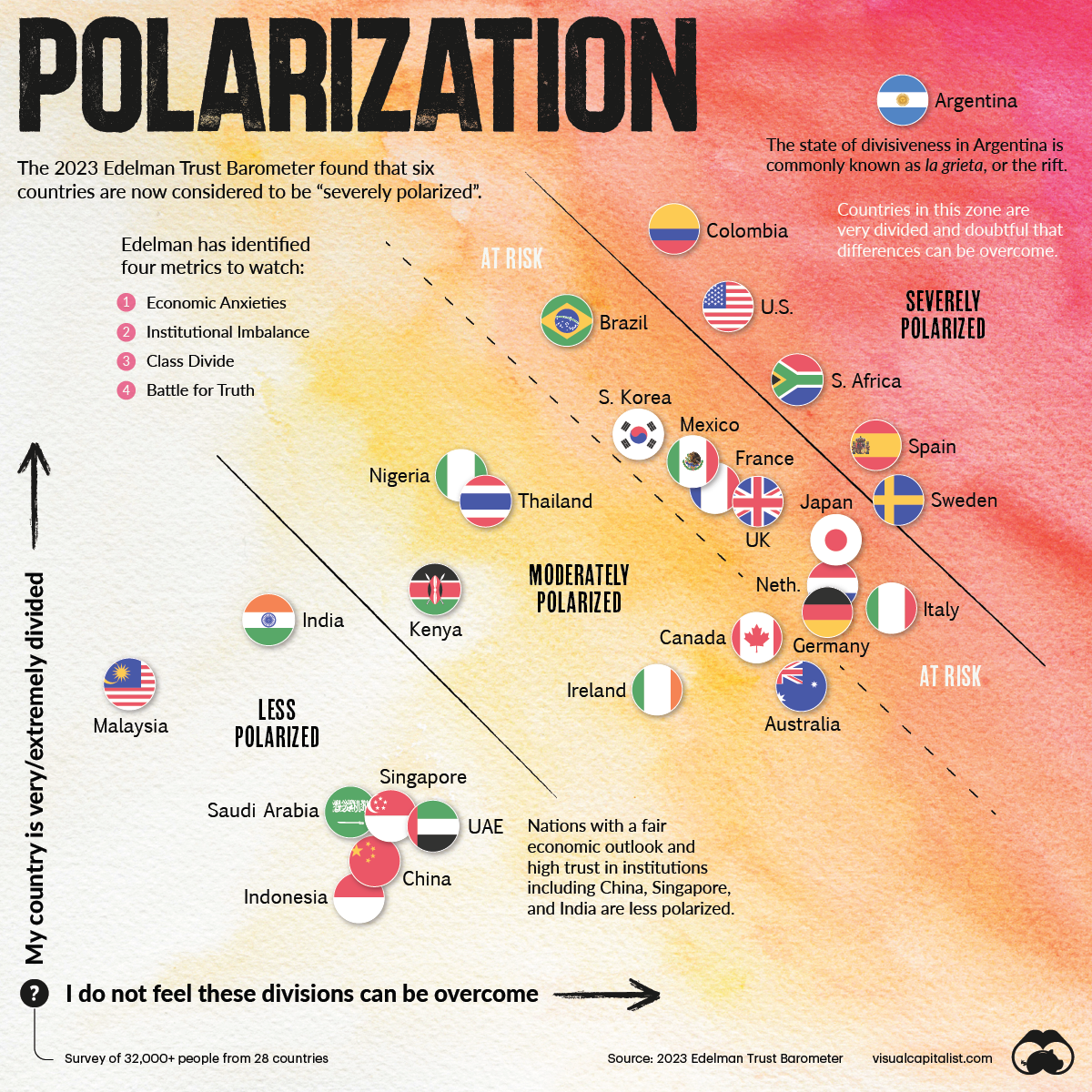
Which Countries are the Most Polarized?
How do you measure something that’s made headlines for half a decade but is still difficult to quantify? We’re talking about polarization.
Even within the social sciences, polarization covers everything from racial segregation, to labor skill levels, to class divide, to political ideology.
How Do You Quantify Polarization?
Edelman’s data on which countries are the most polarized comes from survey results asking respondents two very simple questions:
- How divided is their country?
- How entrenched is the divide?
The questions help bring to light the social issues a particular country is facing and the lack of consensus on those issues.
Plotted against each other, a chart emerges. A country in the top–right corner of the chart is “severely polarized.” Countries located closer to the lower–left are considered less polarized.
In the report, Edelman identifies four metrics to watch for and measure which help quantify polarization.
| Economic Anxieties | Will my family be better off in five years? |
| Institutional Imbalance | Government is viewed as unethical and incompetent. |
| Class Divide | People with higher incomes have a higher trust in institutions. |
| Battle for Truth | Echo chambers, and a low trust in media. |
Following Edelman’s metrics, countries with economic uncertainty and inequality as well as institutional distrust are more likely to be polarized. Below, we look at key highlights from the chart.
Severely Polarized Countries
Despite being one of the largest economies in Latin America, Argentina is the most polarized country surveyed by a large margin. Foreign loan defaults, a high fiscal deficit, and now surging inflation have created a perfect storm in the country.
43% of the Argentinian respondents said they will be better off in five years, down 17 percentage points from last year.
Along with fiscal upheaval, Argentinians are also dealing with enduring corruption in the public sector and abrupt policy reversals between governments. Only 20% of those surveyed in Argentina said they trusted the government—the least of all surveyed countries.
Here are all six of the countries considered to be severely polarized:
-
🇦🇷 Argentina
🇨🇴 Colombia
🇺🇸 United States
🇿🇦 South Africa
🇪🇸 Spain
🇸🇪 Sweden
In the U.S., heightened political upheaval between Democrats and Republicans over the last few years has led to strengthening ideological stances and to an abundance of headlines about polarization. Only 42% of respondents in the country trust the government.
And in South Africa, persistent inequality and falling trust in the African National Congress also check off Edelman’s metrics. It’s also second after Argentina with the least trust in government (22%) per the survey.
Moderately Polarized Countries
The biggest cluster of 15 countries are in moderately polarized section of the chart, with all continents represented.
-
🇧🇷 Brazil
🇰🇷 South Korea
🇲🇽 Mexico
🇫🇷 France
🇬🇧 United Kingdom
🇯🇵 Japan
🇳🇱 Netherlands
🇮🇹 Italy
🇩🇪 Germany
🇳🇬 Nigeria
🇹🇭 Thailand
🇰🇪 Kenya
🇨🇦 Canada
🇦🇺 Australia
🇮🇪 Ireland
Some are on the cusp of being severely polarized, including economic heavyweights like Japan, the UK, France, and Germany. On the other hand, smaller economies like Thailand, Kenya, and Nigeria, are doing comparatively better on the polarization chart.
Less Polarized Countries
Countries with fair economic outlook and high trust in institutions including China, Singapore, and India are in the bottom left sector of the chart.
-
🇮🇩 Indonesia
🇨🇳 China
🇦🇪 United Arab Emirates
🇸🇬 Singapore
🇸🇦 Saudi Arabia
🇲🇾 Malaysia
🇮🇳 India
It’s interesting to note that of the seven countries in that sector, three are not democracies. That said, there are also more developing countries on this list as well, which could also be a factor.
Looking Ahead
Edelman notes that polarization is both “cause and consequence of distrust,” creating a self-fulfilling cycle. Aside from the four metrics stated above, concerns about the erosion of civility and weakening social fabric also lead to polarization.
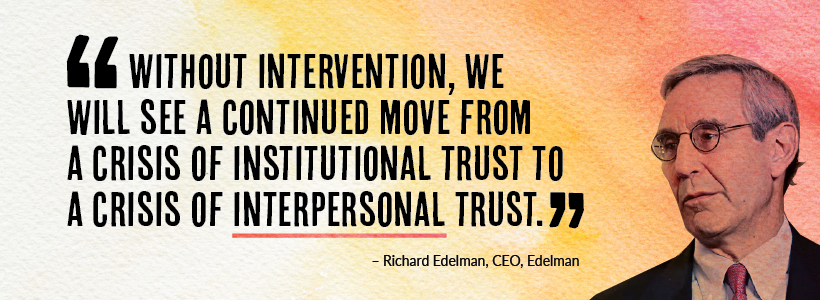
As global events unfold in 2023—including looming worries of a recession—it will be fascinating to see how countries might switch positions in the year to come.
Where does this data come from?
Source: The 2023 Edelman Trust Barometer
Data note: Survey conducted: Nov 1 – Nov 28, 2022. Survey included 32,000+ respondents in 28 countries. Russia was omitted from this year’s survey. See page 2 of the report for more details.
Maps
Charted: Contributions to UN Peacekeeping Forces by Country
In 2023, the UN Peacekeeping Forces, under the purview of the Security Council, comprised of more than 60,000 personnel from 118 countries.

Charted: Contributions to UN Peacekeeping Forces by Country
An earlier version of this graphic was posted on our Voronoi app. Download the app for free on iOS or Android and discover incredible data-driven charts from a variety of trusted sources.
With their sky blue helmets, berets, and badges, the UN Peacekeeping forces are meant to be a symbol of international cooperation in conflict zones around the world.
They’re composed entirely from voluntary contributions from UN Member States—and include police and civilian roles along with military personnel.
The visualization by creator Preyash Shah serves as a primer on the UN Peacekeeping forces. It shows which countries are the biggest personnel contributors, which of them are top funders, and also lists the current ongoing peacekeeping operations. Data for this chart comes from the UN Peacekeeping archives.
Countries by Troop Contributions to UN Peacekeeping (2023)
From South Asia, a trio of countries—Nepal, Bangladesh, and India—are each contributing more than 6,000 personnel to the UN peacekeepers.
A majority of these representatives are soldiers, heavily involved in the four active peacekeeping missions in Africa.
| Rank | Country | Personnel |
|---|---|---|
| 1 | 🇳🇵 Nepal | 6,247 |
| 2 | 🇧🇩 Bangladesh | 6,197 |
| 3 | 🇮🇳 India | 6,073 |
| 4 | 🇷🇼 Rwanda | 5,919 |
| 5 | 🇵🇰 Pakistan | 4,164 |
| 6 | 🇮🇩 Indonesia | 2,717 |
| 7 | 🇬🇭 Ghana | 2,664 |
| 8 | 🇨🇳 China | 2,267 |
| 9 | 🇪🇬 Egypt | 1,739 |
| 10 | 🇲🇦 Morocco | 1,715 |
| 11 | 🇹🇿 Tanzania | 1,544 |
| 12 | 🇪🇹 Ethiopia | 1,509 |
| 13 | 🇸🇳 Senegal | 1,194 |
| 14 | 🇿🇦 South Africa | 1,133 |
| 15 | 🇨🇲 Cameroon | 1,103 |
| 16 | 🇺🇾 Uruguay | 1,016 |
| 17 | 🇿🇲 Zambia | 996 |
| 18 | 🇹🇳 Tunisia | 988 |
| 19 | 🇲🇳 Mongolia | 898 |
| 20 | 🇮🇹 Italy | 872 |
| 21 | 🇲🇾 Malaysia | 865 |
| 22 | 🇲🇼 Malawi | 802 |
| 23 | 🇲🇷 Mauritania | 787 |
| 24 | 🇧🇮 Burundi | 769 |
| 25 | 🇰🇭 Cambodia | 734 |
| 26 | 🇪🇸 Spain | 688 |
| 27 | 🇺🇬 Uganda | 654 |
| 28 | 🇫🇷 France | 587 |
| 29 | 🇱🇰 Sri Lanka | 561 |
| 30 | 🇰🇷 South Korea | 545 |
| 31 | 🇮🇪 Ireland | 458 |
| 32 | 🇰🇪 Kenya | 456 |
| 33 | 🇳🇬 Nigeria | 421 |
| 34 | 🇹🇬 Togo | 408 |
| 35 | 🇩🇪 Germany | 383 |
| 36 | 🇯🇴 Jordan | 357 |
| 37 | 🇫🇯 Fiji | 339 |
| 38 | 🇧🇯 Benin | 319 |
| 39 | 🇦🇷 Argentina | 292 |
| 40 | 🇹🇭 Thailand | 289 |
| 41 | 🇬🇧 UK | 280 |
| 42 | 🇻🇳 Viet Nam | 274 |
| 43 | 🇷🇸 Serbia | 271 |
| 44 | 🇵🇪 Peru | 262 |
| 45 | 🇸🇰 Slovakia | 244 |
| 46 | 🇵🇹 Portugal | 239 |
| 47 | 🇩🇯 Djibouti | 226 |
| 48 | 🇧🇹 Bhutan | 219 |
| 49 | 🇬🇹 Guatemala | 218 |
| 50 | 🇫🇮 Finland | 204 |
| 51 | 🇵🇱 Poland | 202 |
| 52 | 🇨🇬 Congo | 189 |
| 53 | 🇸🇻 El Salvador | 187 |
| 54 | 🇦🇹 Austria | 177 |
| 55 | 🇱🇷 Liberia | 161 |
| 56 | 🇧🇫 Burkina Faso | 156 |
| 57 | 🇹🇷 Turkiye | 154 |
| 58 | 🇨🇮 Côte d'Ivoire | 132 |
| 59 | 🇬🇷 Greece | 103 |
| 60 | 🇳🇪 Niger | 88 |
| 61 | 🇷🇺 Russia | 88 |
| 62 | 🇬🇲 Gambia | 81 |
| 63 | 🇧🇷 Brazil | 79 |
| 64 | 🇬🇳 Guinea | 74 |
| 65 | 🇵🇾 Paraguay | 59 |
| 66 | 🇳🇴 Norway | 51 |
| 67 | 🇷🇴 Romania | 49 |
| 68 | 🇿🇼 Zimbabwe | 49 |
| 69 | 🇨🇦 Canada | 47 |
| 70 | 🇭🇺 Hungary | 38 |
| 71 | 🇧🇦 Bosnia & Herzegovina | 34 |
| 72 | 🇦🇲 Armenia | 33 |
| 73 | 🇧🇳 Brunei Darussalam | 29 |
| 74 | 🇸🇪 Sweden | 29 |
| 75 | 🇲🇱 Mali | 28 |
| 76 | 🇧🇴 Bolivia | 27 |
| 77 | 🇺🇸 U.S. | 27 |
| 78 | 🇦🇺 Australia | 26 |
| 79 | 🇸🇱 Sierra Leone | 26 |
| 80 | 🇵🇭 Philippines | 21 |
| 81 | 🇨🇭 Switzerland | 19 |
| 82 | 🇨🇿 Czech Republic | 18 |
| 83 | 🇰🇿 Kazakhstan | 18 |
| 84 | 🇲🇽 Mexico | 18 |
| 85 | 🇭🇳 Honduras | 17 |
| 86 | 🇨🇱 Chile | 15 |
| 87 | 🇰🇬 Kyrgyzstan | 15 |
| 88 | 🇹🇩 Chad | 14 |
| 89 | 🇭🇷 Croatia | 13 |
| 90 | 🇳🇱 Netherlands | 13 |
| 91 | 🇪🇨 Ecuador | 11 |
| 92 | 🇩🇴 Dominican Republic | 10 |
| 93 | 🇳🇦 Namibia | 10 |
| 94 | 🇲🇩 Moldova | 10 |
| 95 | 🇲🇹 Malta | 9 |
| 96 | 🇩🇰 Denmark | 8 |
| 97 | 🇳🇿 New Zealand | 8 |
| 98 | 🇸🇮 Slovenia | 7 |
| 99 | 🇪🇪 Estonia | 6 |
| 100 | 🇲🇪 Montenegro | 6 |
| 101 | 🇨🇴 Colombia | 5 |
| 102 | 🇲🇬 Madagascar | 5 |
| 103 | 🇦🇱 Albania | 4 |
| 104 | 🇯🇵 Japan | 4 |
| 105 | 🇱🇻 Latvia | 4 |
| 106 | 🇧🇪 Belgium | 3 |
| 107 | 🇩🇿 Algeria | 2 |
| 108 | 🇦🇴 Angola | 2 |
| 109 | 🇦🇿 Azerbaijan | 2 |
| 110 | 🇧🇼 Botswana | 2 |
| 111 | 🇨🇾 Cyprus | 2 |
| 112 | 🇵🇬 Papua New Guinea | 2 |
| 113 | 🇹🇱 Timor-Leste | 2 |
| 114 | 🇱🇹 Lithuania | 1 |
| 115 | 🇲🇰 North Macedonia | 1 |
| 116 | 🇶🇦 Qatar | 1 |
| 117 | 🇸🇹 Sao Tome & Principe | 1 |
| 118 | 🇹🇯 Tajikistan | 1 |
| N/A | 🌐 World | 66,839 |
Source: Troop & Police Contributors, United Nations Peacekeeping.
However, these three countries—and the others in the top 15—are outliers when looking at overall troop contributions.
Of the 118 countries currently volunteering forces to the UN, 103 of them have fewer than 1,000 UN Peacekeepers.
The U.S. for example currently has only 27 personnel in the peacekeepers, as of November 2023. Of them, 21 are staff officers, four are “experts on mission,” and two are police; none are troops.
Other countries that have zero “boots on the ground” include: Canada, Japan, and Australia.
Countries by Financial Contributions to UN Peacekeeping (2021)
While all UN member states are mandated to contribute to the peacekeeping budget, the share of financial contributions is similarly unevenly distributed.
Most of the world’s largest economies are also the top funders to the UN peacekeeping forces.
For the financial year 2020–2021, the U.S. contributed nearly $2 billion to the UN peacekeepers, followed by China ($1 billion), Japan ($563 million), Germany ($401 million) and the UK ($381 million).
| Rank | Country | Region | Contribution | Estimated Value (USD Millions) |
|---|---|---|---|---|
| 1 | 🇺🇸 U.S. | North America | 27.89% | $1,835 |
| 2 | 🇨🇳 China | Asia | 15.21% | $1,000 |
| 3 | 🇯🇵 Japan | Asia | 8.56% | $563 |
| 4 | 🇩🇪 Germany | Europe | 6.09% | $401 |
| 5 | 🇬🇧 UK | Europe | 5.79% | $381 |
| 6 | 🇫🇷 France | Europe | 5.61% | $369 |
| 7 | 🇮🇹 Italy | Europe | 3.30% | $217 |
| 8 | 🇷🇺 Russia | Asia | 3.04% | $200 |
| 9 | 🇨🇦 Canada | North America | 2.73% | $180 |
| 10 | 🇰🇷 South Korea | Asia | 2.26% | $149 |
| N/A | 🌐 RoW | N/A | 19.52% | $1,284 |
| N/A | Total | N/A | 100% | $6,579 |
Source: How We are Funded, United Nations Peacekeeping.
The five permanent members of the UN Security Council carry a greater financial responsibility to the peacekeeping budget, in accordance with their security council privileges.
Ranked: Current UN Peacekeeping Missions by Personnel (2023)
As of November, 2023, there are 11 active UN peacekeeping missions in operation. There have been more than 60 peacekeeping operations since 1948; the first one was established in Palestine to oversee the truce between Arab and Jewish communities.
| Rank | Location | Established | UNPK Personnel |
|---|---|---|---|
| 1 | 🇨🇫 Central African Republic | 2014 | 18,448 |
| 2 | 🇸🇸 South Sudan | 2011 | 18,412 |
| 3 | 🇨🇩 DRC | 2010 | 17,971 |
| 4 | 🇱🇧 Lebanon | 1978 | 10,385 |
| 5 | 🇸🇩 Sudan & 🇸🇸 South Sudan | 2011 | 3,388 |
| 6 | 🇸🇾 Syria | 1974 | 1,331 |
| 7 | 🇨🇾 Cyprus | 1964 | 1,017 |
| 8 | 🇪🇭 Western Sahara | 1991 | 468 |
| 9 | 🇮🇱 Israel & 🇵🇸 Palestine | 1948 | 375 |
| 10 | 🇽🇰 Kosovo | 1999 | 353 |
| 11 | 🇮🇳 India & 🇵🇰 Pakistan | 1949 | 104 |
Source: Where We Operate, United Nations Peacekeeping.
A key tenant of the missions is to protect civilians and human rights, and several of them have failed in this regard, including the 1994 Rwandan genocide and the decade of Balkan civil wars.
And peacekeepers themselves have also garnered less than stellar reputations, after perpetrating sexual abuse in the Central African Republic and Congo, and causing a cholera epidemic in Haiti in 2010.
-

 Automotive6 days ago
Automotive6 days agoMapped: Where Tesla and BYD Make Their Cars
-

 Technology2 weeks ago
Technology2 weeks agoCharted: How Many Data Centers do Major Big Tech Companies Have?
-

 Globalization2 weeks ago
Globalization2 weeks agoCharted: Countries Offering Digital Nomad Visas
-

 Politics2 weeks ago
Politics2 weeks agoMapped: Unauthorized Immigrants by State
-
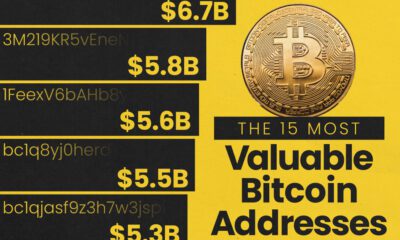
 Technology2 weeks ago
Technology2 weeks agoVisualizing the 15 Most Valuable Bitcoin Addresses
-

 Demographics2 weeks ago
Demographics2 weeks agoWhich Countries Have the Most and Least Women in the Workforce?
-
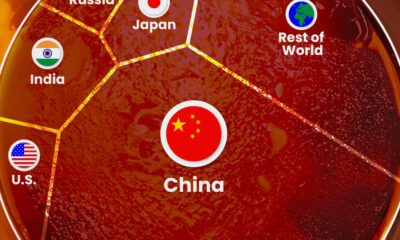
 Mining1 week ago
Mining1 week agoVisualizing Raw Steel Production in 2023
-

 Crime1 week ago
Crime1 week agoCharted: The World’s Highest Homicide Rates, in Each Region




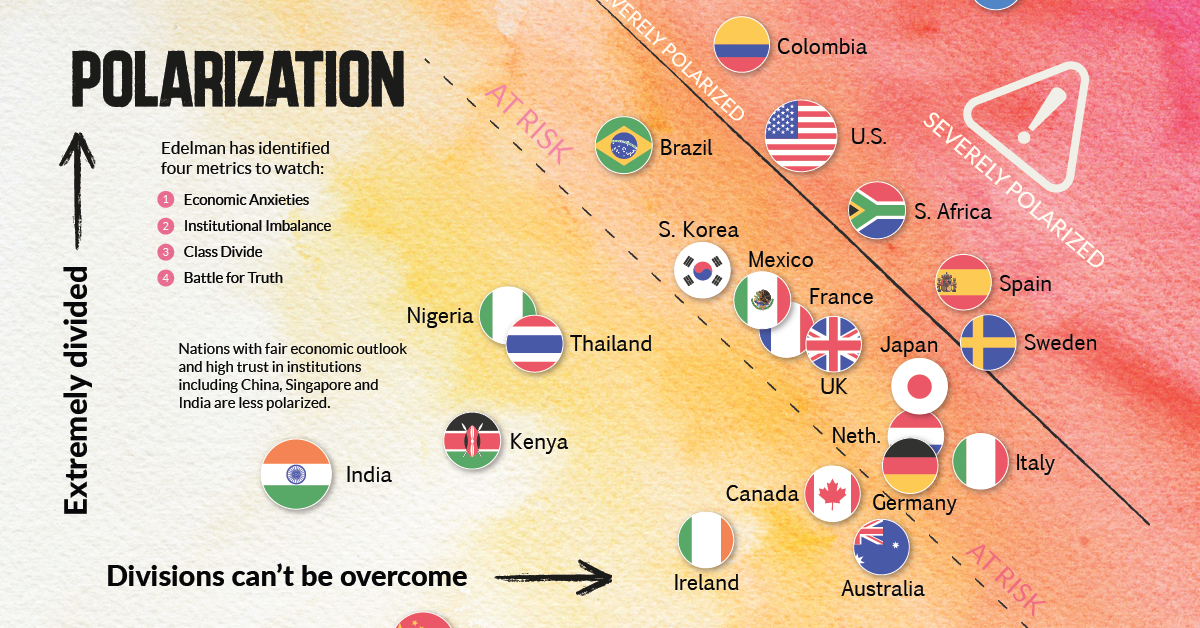


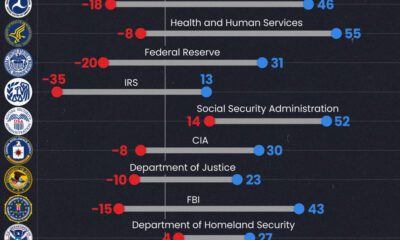

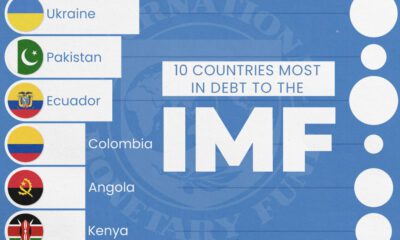






 Creator Program
Creator Program
